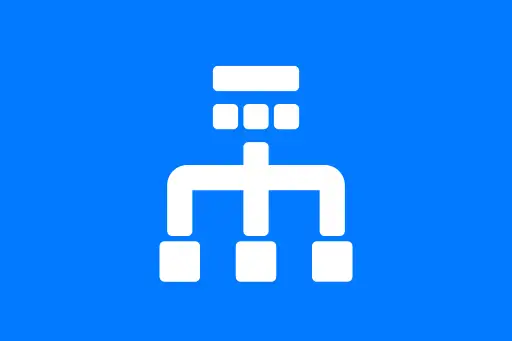Resources for Practice
Getting Started with System Design Practice
System design can be overwhelming for beginners, especially when you're not sure where to start or what to practice. In this module, we’ll explore the most effective resources and strategies to help you build confidence and hands-on understanding of real-world system design. These resources are beginner-friendly and will help you develop both theoretical and practical skills.
1. Practice on System Design Interview Platforms
Several online platforms offer curated system design problems and mock interviews. Practicing on these platforms helps simulate the actual interview environment and helps you get familiar with how to approach design questions step by step.
Example: Exponent (www.tryexponent.com)
Exponent offers mock interview recordings, structured frameworks, and coaching content specifically tailored to system design interviews. Each problem is broken down into components like scalability, data modeling, and trade-offs.
Example: Interviewing.io (www.interviewing.io)
This platform allows you to conduct free anonymous mock interviews with engineers from top tech companies. Some of these interviews focus specifically on system design and include real-time feedback.
Example: Pramp (www.pramp.com)
Pramp offers free peer-to-peer interviews, including system design. It's especially useful for beginners to practice speaking out their thought process and get live feedback from peers.
2. Use Real-World System Design Problems
Practicing with real-world problems helps you apply concepts to systems that you already use daily. This strengthens your understanding and improves recall during interviews.
Example: Design a URL Shortener
Start with questions like:
- How do you generate unique short links?
- How would you handle collisions?
- How would you make the system scalable and fault-tolerant?
Beginner Tip: Think of a short URL as a key in a key-value store. The key is the short URL, and the value is the original long URL. You can use a hash function to generate the short key. But then, how do you ensure the key is unique?
Answer: One approach is to append a random string and check if it already exists in your database. If yes, regenerate. Or you could use incremental IDs encoded in Base62 to ensure uniqueness.
Question to Ponder:
What happens if a short URL is accessed 10,000 times per second?
Answer: You’ll need caching (like Redis) to reduce DB reads and a load balancer to distribute traffic to multiple servers.
3. Recommended Books
Books are a great way to learn structured system design patterns and principles. Start with beginner-friendly titles and gradually move to more advanced ones.
Example: Designing Data-Intensive Applications by Martin Kleppmann
This book explains core concepts like scalability, consistency, and fault tolerance with diagrams and real-world examples. It’s especially useful for understanding how modern distributed systems work.
Example: System Design Interview – An Insider’s Guide by Alex Xu
This is one of the most beginner-friendly books, with clear explanations and step-by-step design examples. It covers everything from database design to API rate limiting.
4. YouTube Channels and Video Series
Visual learners may benefit more from video content. Some channels provide animated system design tutorials and mock interviews.
Example: Gaurav Sen (YouTube)
Gaurav Sen's channel breaks down complex systems like WhatsApp, Uber, and Google Search into simple, understandable diagrams. He explains trade-offs clearly, making it ideal for beginners.
Example: System Design Interview (YouTube Playlist by Exponent)
This playlist contains recorded mock interviews that simulate real-life interviews, along with explanations of best practices and red flags to avoid.
5. GitHub Repositories
Open-source repositories often contain curated problem sets, solution frameworks, and real interview experiences shared by others.
Example: Donne Martin’s system-design-primer
One of the most starred GitHub repos for system design. It contains links to resources, example problems, and detailed solutions categorized by difficulty.
How to Use It as a Beginner:
- Pick one problem per week
- Sketch the design on paper or use tools like Excalidraw or draw.io
- Review and compare your approach with the one in the repository
6. Tools to Practice Diagrams and Design Flows
It’s important to practice drawing system components like databases, load balancers, caches, and queues. These tools help you simulate whiteboard interviews.
Example Tools:
- draw.io – Free diagram tool ideal for system design
- Lucidchart – Professional diagramming with templates
- Excalidraw – Hand-drawn look, great for sketching interview-style designs
7. Practice with Peers or Mentors
Practicing system design alone has limits. Group discussions, mentorship, and feedback can expose you to alternative design approaches and help refine your thinking.
Where to Find Practice Partners:
- LinkedIn groups focused on interviews or system design
- Slack or Discord communities (e.g., Tech Interview Handbook, Blind)
- Reddit: subreddits like r/cscareerquestions or r/systemdesign
Key Takeaways
- Use beginner-friendly platforms like Exponent and Pramp to simulate interviews.
- Solve real-world system problems to improve intuition.
- Books and GitHub repos offer structure and depth for self-paced learning.
- Don’t skip visual tools—being able to draw your architecture is critical.
- Discuss your designs with peers to explore multiple perspectives.











Comments
Loading comments...